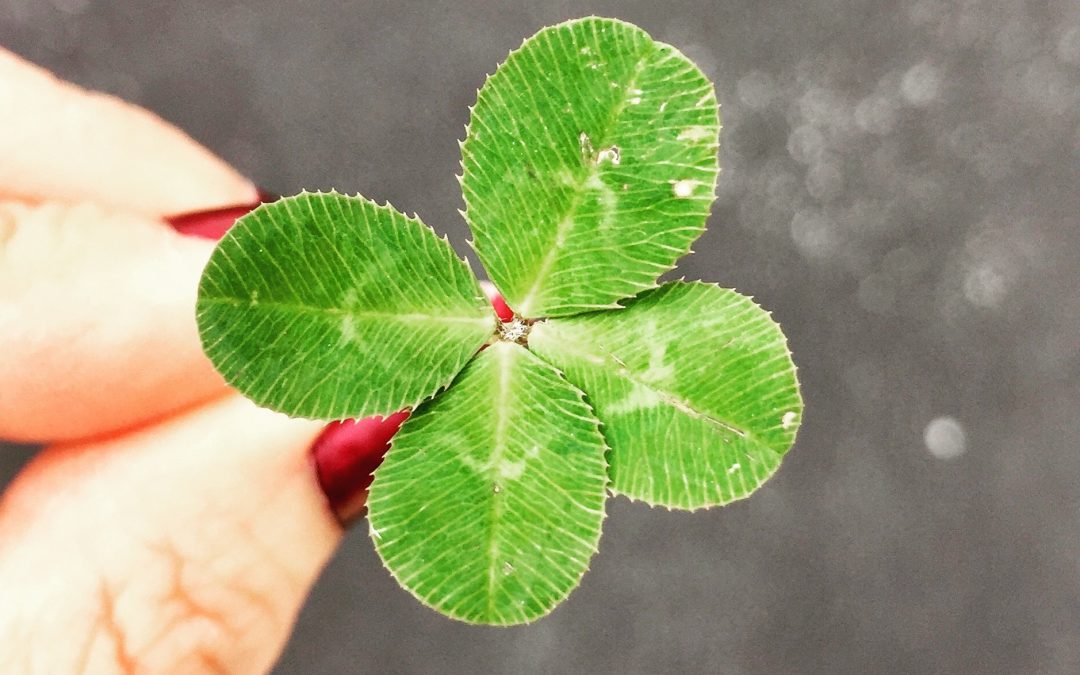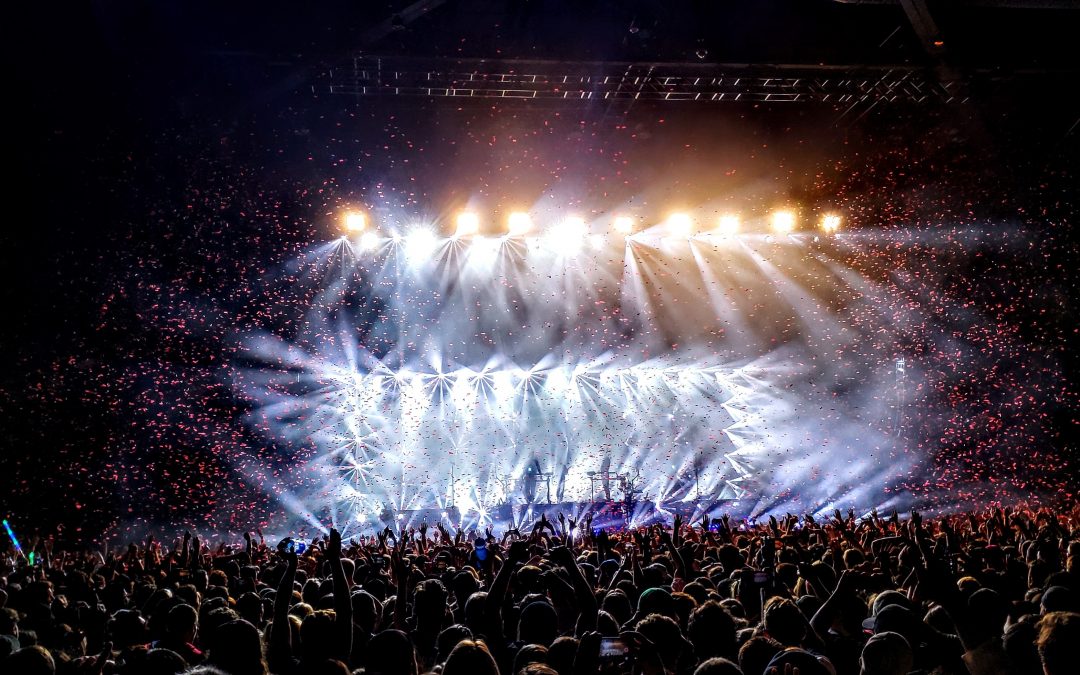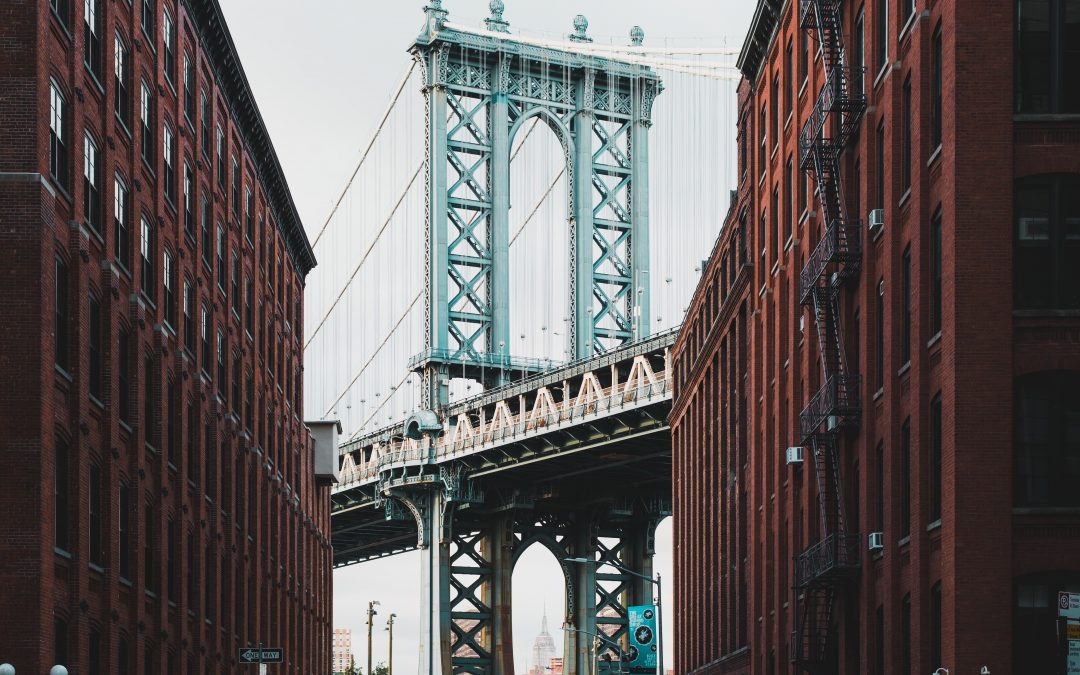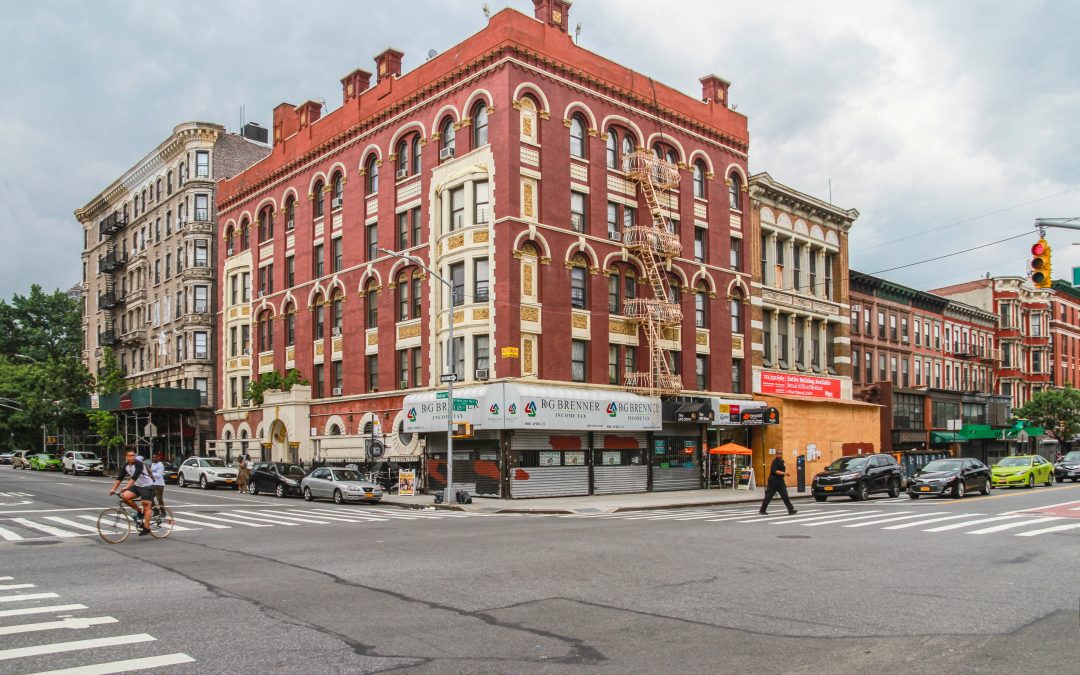
by BCB Property Management | Mar 17, 2016 | History, New York City
Every year in cities across the US, an emerald horde flows between pubs, imbibing Guinnesses through faux-ginger beards and raising noise levels by many decibels. March 17th is St. Patrick’s day, an Americanized celebration of Irish heritage that has somehow turned the potato into a coconut candy and shamrocks into milkshakes.
Today’s parades and bar crawls may not resemble St. Patrick’s Day as it has ever looked in Ireland: in fact, the holiday was a solemn Catholic feast day. But in America, and New York City in particular, the holiday dates back to the days of Irish immigrants marching in solidarity to preserve their heritage.
That’s right: the parades and traditions most of us associate with St. Patrick’s Day aren’t really Irish at all. Instead they largely began in America, and have steadily evolved into the green tide of a leprechaun fever dream that descends upon the nation with ferocity every March.
The first parades
On March 17th, 1762, Irish soldiers serving in the British Army held the first parade in honor of the Irish feast day. The celebrations were quieter affairs at first, but that changed when record numbers of Irish immigrants emigrated to the United States a century later. The wave came as a result of the Great Famine in Ireland, which forced many to relocate in the mid-to-late 19th century.
As the Irish population grew in America, the celebration grew as well. Since the Irish were initially subjected to unfair treatment and xenophobia in the States, the celebration was one day they could come together to honor their roots in spite of discrimination. Falsely characterized as drunken and violent by outsiders and scorned for their Catholicism by Protestants, the holiday let them show pride in their hybrid identity as Irish Americans with a stake in both the past and present.
Before long, Irish-Americans began to dominate American demographics: Irishmen made up about a quarter of New York City by 1890, and they even outnumbered the population of Dublin at one point. As Irish societies and organizations emerged in New York City, the annual St. Patrick’s Day parade grew even larger. Before long it was the largest in America, and for a time the largest in the world.
The popularity of America’s St. Patrick’s Day celebration inspired Ireland to mimic the revelry back home with military parades, though pubs were closed that day until the mid-1960s. Celebrated as a religious feast day since the 17th century, the holiday didn’t become a public one in Ireland until 1907.
Modern day
Like most other major holidays, during the 20th century St. Patrick’s Day became a great commercial opportunity complete with greeting cards, streamers, treats and T-shirts. By this time the celebration was no longer limited to Irish-Americans, either: it was ubiquitous, a testament to the strength, power, and enormous number of Irish Americans.
Every year since 1991, the entirety of March has been declared Irish-American Heritage Month (in addition to Women’s History Month, of course). St. Patrick’s Day itself is not a federal holiday in the US, but it’s still marketed as a major holiday and as such you’ll see signs of it everywhere, from Chicago’s green-dyed river to the White House’s fountain and the Empire State Building.
The annual parade in New York City has evolved too. Once just an informal gathering of homesick Irish immigrants, the parade is expected to have about 200,000 people marching up 5th Avenue. The largest turnout was in 2002 with 300,000 marchers, parading in honor of 9/11 heroes.
Though much has changed, commercialization chief among deviations, some things remain the same: for example, the marching past St. Patrick’s Cathedral, wearing green, and the performance of traditional Irish tunes. With 39.6 million Americans today claiming Irish heritage — seven times the entire population of Ireland — it’s easy to see why the holiday is more popular than ever, shamrock shakes and all.
Featured image: gigi_nyc via Flickr

by BCB Property Management | Feb 25, 2016 | History, New York City
Perched mightily above Pennsylvania Station in Midtown Manhattan, Madison Square Garden’s formidable presence is apparent at a glance. The arena defies all logic in name: far from Madison Avenue, it is neither square nor inclusive of anything resembling a garden.
A venue often graced by famous musicians, athletes, and world leaders, Madison Square Garden may not match its name, but is nonetheless an iconic New York City landmark. It’s also the fourth iteration of its kind. Having endured makeovers, demolition and reconstruction time and again in several locations over nearly a century and a half, the final product is one of monumental stature and significance
Madison I through III: Grand, but damned
Madison Square Garden’s epic history begins at Fifth Avenue and 23rd street, southeast of its current location in what is now the Flatiron District.
Formerly occupied by a railway terminal, the space was leased by P.T. Barnum from Cornelius Vanderbilt and transformed into venue branded the Great Roman Hippodrome, or Barnum’s Hippodrome. Barnum seized an opportunity to build a large enclosed event space once Cornelius Vanderbilt moved his railroad to Grand Central Terminal.
Barnum went on to build a 274-foot oval center laced with wooden benches wrapped around the building’s performance space. The building would only draw big crowds for a few events at the time, so there was a revolving door for proprietors. The original construction was far from perfect: a tent was used to seal the of the venue, making it very difficult to host during inclement weather.
After five years, William Vanderbilt reclaimed the venue and gave it a new presence that would kickstart it’s future legacy. On May 31, of 1879, a gala ceremony presented the new name: Madison Square Garden. It was used to host boxing matches and circus performances among other fantastical events.
Though Vanderbilt would crown the name that would last until present day, we can’t say the same for the actual MSG building. Madison I, as it’s called today, was sold to a syndicate that included Andrew Carnegie and J.P. Morgan. They demolished the building in 1891 and commissioned the second rendition: Madison II.
The second rendition was born from the mind of renowned architect Stanford White; featuring Moorish architecture and 33 stories, it towered over Madison Square Park. Madison II was the second tallest building in Manhattan at the time, and its main area was the largest in the world with room for 8,000 seating and thousands more standing.
After its grand opening in 1920, the new tower had a 1,200-seat theater, a concert hall that could hold 1,500 persons, and the largest restaurant in the city. It even had a roof garden, making the name more appropriate. The building cost $3 million in total but was doomed to suffer the fate of its predecessor. In 1925, the mortgage owners, New York Life Insurance Company, decided to tear the building down to replace it with their new headquarters.
Madison III, it would be determined, was to end in rubble as well. Built on 8th Avenue between 48th and 50th, the enormous venue boasted a massive seating capacity of 18,496 people, seats that would fill to the brim for the Ringling Brothers, the New York Knicks and Rangers, and the American First Committee peace rallies.
It was nowhere near Madison Square, but the name stuck around along with another moniker: “The House That Tex Built.” This name is in reference to owner and operator Tex Rickard, who built the arena in just 249 days at a cost of $4.75 million.
Madison III had a pretty solid 37-year run, but was demolished when the Madison Square Garden we know and love today opened in 1968.
Madison IV: The final era?
The current Madison Square Garden, located at 7th Avenue between 31st and 33rd streets, opened as a by-product of the demolition of the original Pennsylvania Station’s above-ground hub. Irving M. Felt purchased the air rights from the Pennsylvania Railroad and built Madison IV: a venue that would outlast its predecessors.
The new structure was unique because it was one of the first buildings to be built above an active railroad station. Madison Square Garden is located in the sports and entertainment building formally known as the Pennsylvania Plaza, and touts a brand that acts as a monument in not only Midtown Manhattan, but the world.
The new building was built around its core cash cows: Circus and talent acts, the New York Rangers, and Knicks basketball. Yet, the space still earns revenue hosting one-off events of all types, from Democratic and Republican conventions to the Pope’s inductee ceremony.
And so, between 1968 and today Madison Square Garden has persisted, and has garnered the title of “World’s Most Famous Arena.” Currently, Madison Square Garden hosts roughly 320 events a year and saw $1.62B of revenue in 2015.
Both before and after the current Madison Square Garden came into existence, the institution has endured an array of makeovers and reconstructions, housed an entire history of events, and switched hands in ownership again and again. That’s certainly a storied history; one that’s seen generations of people joined by music, laughter, team spirit and applause.
Today it exists as one of New York City’s most fruitful revenue generators. While this matters from an economic standpoint, it’s safe to say that Madison Square Garden’s financial benefit is matched, if not exceeded, by its inherent culture and history.
Featured image: Diana Robinson via Flickr

by BCB Property Management | Jan 12, 2016 | Brooklyn, Neighborhoods, New York City
Brooklyn in the early 20th century was home to a quickly growing population and developing community.
There was noticeable growth in city transportation. Funded through New York City tax dollars, there were grave advances made. Developers used tax dollars to construct new bridges, trolley lines, underground subway lines, and elevated railroads. These advances extended transportation into the outskirts of surrounding boroughs creating much easier access into Manhattan.
Brooklyn started to develop into a city where Trolleys occupied the streets. Soon after, the Williamsburg Bridge was finished in 1903 followed by the first subway line to tunnel under the East River in 1908. With the increase in transportation from Brooklyn to Manhattan, residential development on began to skyrocket in this borough. As tenants rushed in, Brooklyn’s character started to develop as well.
The Brooklyn population saw another spike in diversity during the 1930s due to two reasons: The Great Migration and the extension of the A train from Harlem to Brooklyn. With such a heavy manufacturing industry in Brooklyn during the time, there was great opportunity for jobs. This New York City borough eventually became the supply for industrial resources needed around the country.
As years went on, Brooklyn began to phase out of the manufacturing industry. The environment wasn’t built to sustain this line of work. Additionally, then the Dodgers moved from Brooklyn to Los Angeles and this beloved city quickly lost their beloved anchor.
Dodgers games were once a community activity for locals and became the culture of the heart of Brooklyn. With the team’s absence, it wasn’t until Brooklyn adopted an artistic community that they started to regain a distinct culture
With the rising rents in Manhattan, the vibrant new communities right over the water in Brooklyn went from undiscovered neighborhoods to very desirable places for all ages and walks of life. Communities like DUMBO, Williamsburg, and Greenpoint not only attracted immigrants but also locals looking to pay less than Manhattan prices.
Brooklyn now supports a population of over 2.5 million people with 170 NYC Subway stations available throughout the borough. The residential development has seen waves of new audiences but present day Brooklyn has a complete list of both vibrant and historic communities.

by BCB Property Management | Jul 17, 2015 | Brooklyn, History, Neighborhoods
While the early story of Park Slope is certainly par for the course for New York City’s development, it does hold one early distinction the neighborhood remains proud to display.
On 3rd Street lies a recreation of the historic Old Stone House of the Revolutionary War. The Dutch farmhouse served as the backdrop to a deadly, yet heroic battle for the George Washington-led Continental Army. Serving as the setting for the first battle after the Americans declared its independence from the British, the British army had outwitted the Americans with a massive gathering of troops. Washington, thinking the British would target Manhattan, arrived in Brooklyn as the Continental Army lines began to break.
The British overpowered the Americans–creating a need for escape. While numerous died that day, a brave stance by 400 Maryland fighters allowed countless soldiers to flee and fight another day.
After its destruction in the late 1800s, the replica Old Stone House reopened in 1933.

by BCB Property Management | Jul 10, 2015 | History, Neighborhoods, New York City
To the Dutch settlers in the 1700s, the area that we now call Morningside Heights was known as Vandewater Heights–named for land owner Harmon Vandewater. Like much of early New York City, the land was covered in greenery and rural calm. Making it stand out from the rest of the city, Morningside Heights lies on an elevated plateau between 110th to 122d Streets. The area now borders two of the city’s parks.
While mostly calm in the early days of settlement, Morningside Heights did have one violent encounter during the American Revolution. In the fall of 1776, the Battle of Harlem Heights occurred between American and British forces. The fighting primarily took place on what now serves as Barnard College.
Much more familiar with its history, Morningside Heights is known for its buildings and learning rather than violence. Joining Barnard in the community is Columbia (founded in 1754) and Columbia’s Teachers College. In fact, the grouping makes up the highest concentration of historic institutions of higher learning than any other American neighborhood. More institutions would join throughout the later stages of the city’s growth that we will discuss in a later post.
Joining the growing education hub would be several types of exquisite architecture which has helped cement the area as one of the city’s most beautifully designed.





